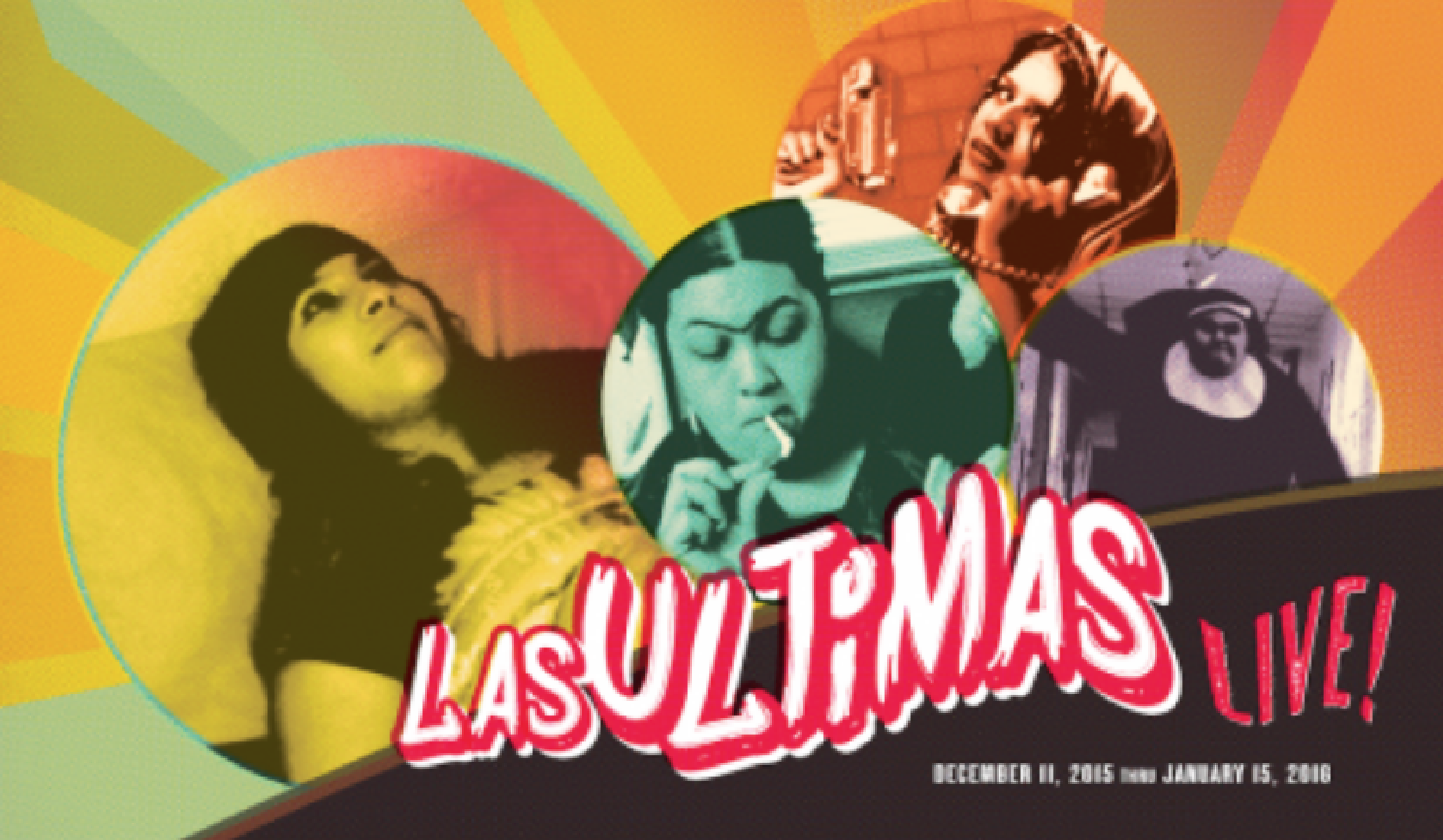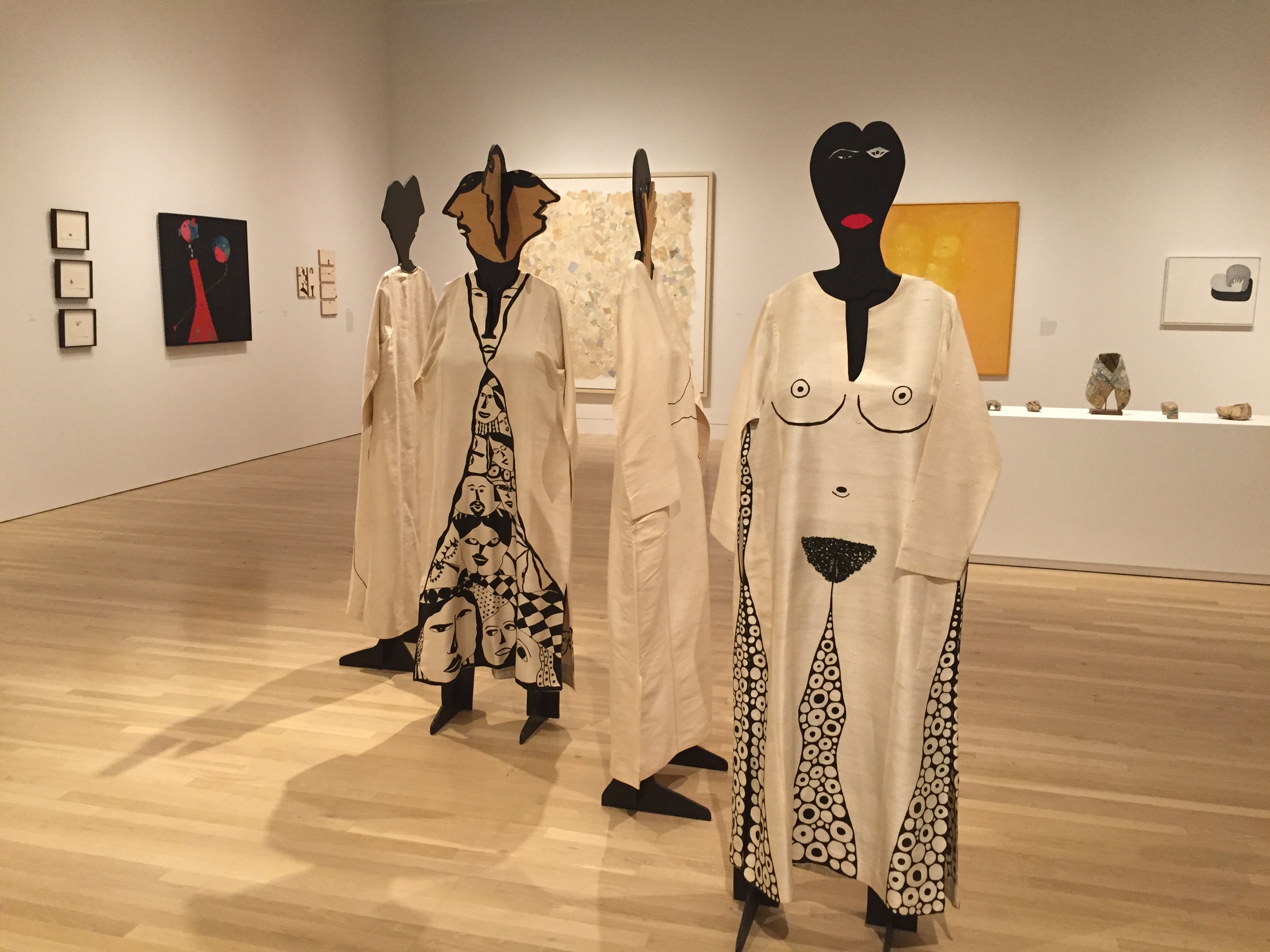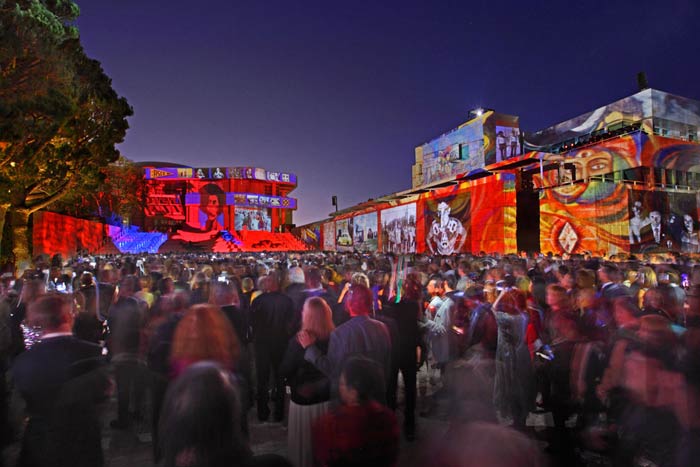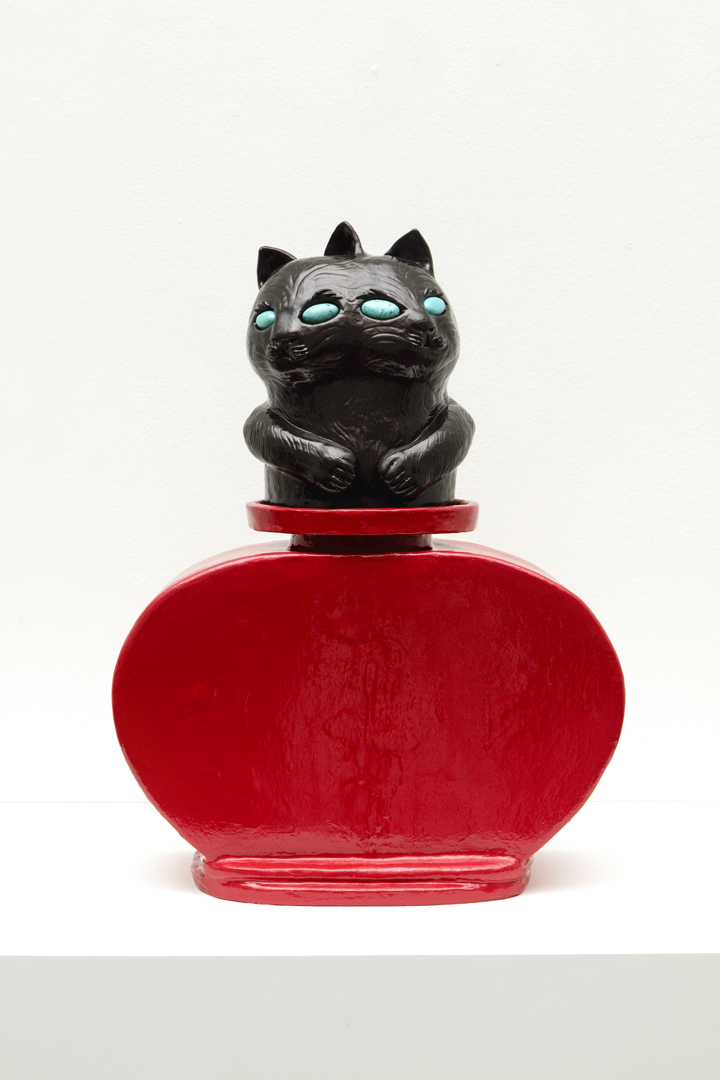
Jim Pirtle
The population of Texas is about 27 million people. The population of greater Los Angeles is upwards of 19 million. If you aggregate the Texas art scene (which is one of the founding ideas of Glasstire), you get a sizable amalgamation of institutions, collections, and—critically—working artists. Statewide, it’s statistically likely that we have as many artists in the state of Texas as the city of Los Angeles, which might mean the same percentage of great ones.

Philiip Pyle, II
There’s a theory that the Texas art scene is akin to Los Angeles in the 1960s—the late curator Walter Hopps believed that we have the same raw culture of energy that’s relatively undisturbed (and relatively unnoticed) by the rest of the country, globalization or no. We’re certainly operating outside of the major market forces driving the kinds of prices that still seem outlandish here, for better or for worse. Like the artists of Hopps’ Ferus Gallery, the best Texas artists today work with the same freedom from national attention as the West Coast icons of a half-century ago. Sure, many of them are here for practical reasons around the cost of living (as were the artists in L.A.). But many of them are also here because they frankly don’t want to deal with the hassle and bullshit of the art world, which has come to resemble the tumescent blob that engulfs Tokyo at the end of Akira.

Stephanie Saint Sanchez
And there are many great artists here. Just off the top of my head, an extremely cursory list would include Jim Pirtle, Pierre Krause, Paul Kittleson, Marjorie Schwarz, Joey Fauerso, Jesse Amado, Emily Peacock, Michael Bise, JooYoung Choi, Anthony Sonnenberg, Phillip Pyle II, Forrest Prince, Celia Eberle, Brad Tucker, Dan Phillips, Stephanie Saint Sanchez, Sterling Allen, Jesse Lott… There are others. Some of these artists have the opportunity to show their art fairly regularly; some of them have to make their own opportunities. All could and should be better known, even locally.

Huguette Caland’s work at Made in L.A.
Which brings me to Made in L.A., which I saw last week at the Hammer Museum. This is the third iteration of their biennial of local artists and designers, and each version evolved fluidly from the previous one, from an emphasis on emerging artists and a large group of 60 in 2012, to this year’s more focused group of about 26 artists from a wide range of generations and disciplines. I loved the show—ambitious but not overcrowded, generous with space for each artist, it was filled with discoveries. It purposefully avoided trying to encapsulate a “look” or even a generalized Southern Californian attitude (if there is such a thing).The only overarching idea was that these people look at the world differently from most other people, and are making things that are interesting to consider. This is a basic universal (it’s simply what artists do), but it bears pointing out that not all artists can become great, but great artists can come from anywhere.

Opening night at the Getty for Pacific Standard Time
The first Made in L.A. came a year after Pacific Standard Time, the massive regional overview of Southern California art spearheaded by the Getty in 2011. Many people ascribe the sense that L.A. has arrived—indeed, that it’s the most exciting art city in the country right now—in no small part to PST. It was a revelation that changed the dialogue around “California” art, perhaps more than anything, for locals. California seemed to finally lose the chip on its shoulder about not being New York.
It’s probably not an accident that the Hammer’s follow-up to its PST show, Now Dig This! Art and Black Los Angeles 1960, would be another broad overview of works by local artists. Like clothing labels that proudly declare “Made in U.S.A.” both as a fact and as an entire credo, the first Made in L.A. turned a cornball idea of local civic pride into an unapologetic badge of honor.

Celia Eberle
I wouldn’t argue that Texas is ready for something like PST—but what we are ready for is our own Made in L.A. Which means some institution has got to step up to the plate with more than occasional solo shows of local artists. True, there have been efforts in Texas over the years—the Austin Museum of Art hosted a triennial for a few iterations, but that was only Austin artists and the pool of talent was too small and itinerant to sustain it. The Contemporary Arts Museum Houston held The First Texas Triennial in 1988 and never followed up with a second one. Of course, the MFAH did Fresh Paint—in 1985. More recently, the Texas Biennial has tried to take up the gauntlet, but with mixed success.

Brad Tucker
In short: we are ripe for a rigorous, joyfully open-minded, unthemed, ongoing and regular survey of the best work being made in Texas. Consider Bill Cunningham, the New York Times street fashion photographer who died on June 25th. One of the great pleasures of following Cunningham’s work was his willingness to go outside the canon, to celebrate “kids” on the street who were often overlooked by fashion insiders; oftentimes he would end a video saying “These people who say there’s no good fashion—that’s baloney! Just look around!”
Imagine a Texas institution approaching a survey of Texas art with a similar democratic (yet exacting) spirit. The artists are here, and Texas has emerged as the new scruffy outlier that has a whiff of the exotic and interesting. I’m not talking about brainless cheerleading; far from it—but I am also tired of the reflexive dogma often voiced by so-called sophisticates: “There really aren’t any good artists in Texas.” Baloney. Just look around.



18 comments
CAMH is on its 2nd right here right now iteration.
http://camh.org/exhibitions/RHRN/V2#.V3_RDMtOlnE
I know. CAMH deserves credit in recent years for making a sustained effort to show TX artists alongside national and international ones. I’m talking about something far more ambitious however. CAMH currently doesn’t have the space for something like Made in LA.
Maybe when the new MFAH building opens, the MFAH can dedicate some space to this.
There was an important exhibit of Texas art at the MFAH in 2000, not to mention Fresh Paint at the MFAH back in 1985. The CAMH had an interesting exhibit in 1988 with the undeservedly hopeful title of The First Texas Triennial Exhibition. But these were all a long time ago.
(Obviously there are institutions in Dallas and Fort Worth that could do it. )
It’s not just space. Whoever did it (and I don’t see it at the MFAH, despite their 2000 show and book — which, keep in mind, was only stuff from their own collection), they would have to be willing to put their backs into really scouring the state.
(And I mentioned the other two shows in the article — et tu, Brute?) 🙂
http://i.imgur.com/hv8MBOP.jpg?1
This rad painting by my good friend Lydia Garcia
I love lists of “great artists”,
or my favorite artists.
Yes, I debated on including a list — it could never be complete — but it seemed cowardly not to.
Just a few questions, Rainey, that I hope will sharpen the discussion:
1. What defines “Made in Texas”? Do you mean art made by any person who currently lives and works in Texas?
2. What aren’t we ready for a Pacific Standard Time-like survey exhibition and historical overview? What are the issues, in your view, that militate against such a project now?
3. How does a metro-centric thematic translate into a state-wide thematic? What is the difference between an entire state,Texas; and a single, global-celebrity city, Los Angeles?
(Aside: OK, I know that LA and SF are two separate cities, but “Southern California Art” did have a center in LA, and SF was on the map in the late-1940s and early-1950s for artists and poets deeply associated with NY, such as Ginsberg, Kerouac, Rothko, Reinhardt, and Still. It seems that exhibition initiated by the Getty in 2011 is undergirded by specific geographical hubs, making a phrase like “Pacific Standard Time” seem a tad overblown . . . but is nevertheless absolutely necessary for the marketing of an exhibition intended to direct our attention and historical consciousness towards the work and significance of particular groups and approaches to art outside New York. One final note: “significance” can mean “consequent” as in “an important stepping stone” or “influential” with respect to today’s artists. What, in your view, would be the art of Texas that meets that criteria?)
4. Pacific Standard Time made sense, in part, because of the real dominance of New York during the 1950s and 1960s. What, in your view, prevents Texas art from being better known, appreciated, and folded into the narrative of contemporary art? I think we need to think more about the meaning of “globalization” of art” Might it be the case, for instance, that the current situation reflects a real, uneven development within this imaginary field?
5. The ethnic diversity of LA’s Pacific-facing culture is not to be overlooked. I’m glad you mentioned such exhibitions in relation to the LA projects. Would you agree, then, that a snapshot of Texas art should also include that art that breaks down regional and national borders, ethnic, and class divisions?
Hi there, here are a few answers:
1. What defines “Made in Texas”? Do you mean art made by any person who currently lives and works in Texas?
– Yes.
2. What aren’t we ready for a Pacific Standard Time-like survey exhibition and historical overview? What are the issues, in your view, that militate against such a project now?
– I think there need to be decades of substantial work having been made by scores, if not hundreds, of artists to substantiate such an undertaking, plus there needs to have been a discernible effect on art-making elsewhere. PST wasn’t about artists working in a vacuum, it was about their influence on art globally. It also involved 60+ institutions and generated 40+ books. Do you think Texas has such a deep artistic history? I don’t, not yet. It’s a moot point anyway, because we don’t have a Getty Institution with the wealth to undertake such a massive project.
3. How does a metro-centric thematic translate into a state-wide thematic? What is the difference between an entire state,Texas; and a single, global-celebrity city, Los Angeles?
(Aside: OK, I know that LA and SF are two separate cities, but “Southern California Art” did have a center in LA, and SF was on the map in the late-1940s and early-1950s for artists and poets deeply associated with NY, such as Ginsberg, Kerouac, Rothko, Reinhardt, and Still. It seems that exhibition initiated by the Getty in 2011 is undergirded by specific geographical hubs, making a phrase like “Pacific Standard Time” seem a tad overblown . . . but is nevertheless absolutely necessary for the marketing of an exhibition intended to direct our attention and historical consciousness towards the work and significance of particular groups and approaches to art outside New York. One final note: “significance” can mean “consequent” as in “an important stepping stone” or “influential” with respect to today’s artists. What, in your view, would be the art of Texas that meets that criteria?)
– No comment on the title Pacific Standard Time; I don’t have strong feelings about it and think it was fine. If Bay Area people were miffed (or Portland or Seattle people), well.. whatever. Again, I don’t think there’s been enough art out of Texas yet (yet) to meet the criteria of influential elsewhere.
4. Pacific Standard Time made sense, in part, because of the real dominance of New York during the 1950s and 1960s. What, in your view, prevents Texas art from being better known, appreciated, and folded into the narrative of contemporary art? I think we need to think more about the meaning of “globalization” of art” Might it be the case, for instance, that the current situation reflects a real, uneven development within this imaginary field?
– Back to my original comparison in the article, I think Texas has the same lack of appreciation as LA did in the 60s and 70s. The decentralization of the art world from New York, and its global break-up into hubs of commerce have little to do with the creation of artwork, unless you want to include high-end decor as art.
5. The ethnic diversity of LA’s Pacific-facing culture is not to be overlooked. I’m glad you mentioned such exhibitions in relation to the LA projects. Would you agree, then, that a snapshot of Texas art should also include that art that breaks down regional and national borders, ethnic, and class divisions?
– Breaks them down, celebrates them, focuses on them, or has nothing to do with them: yes, sure, obviously.
Hi Rainey, thanks for responding to my questions. It’s appreciated!
As a relatively recent transplant to Texas, I think there are many good artists that have developed here. They may have struggled to escape obscurity because the flip side of thinking about Texas as a self-contained, rich and expansive cultural entity is that it gives the rest of the country a pass to pay attention. I guess I have to disagree with your projections about significance, because I see a structural problem that needs to be addressed. How we can discount hubs of commerce, for example? Collectors, curators, and the art media frequent them and artists who produce a certain type of object depend on them as the principal means of distribution. We may not like these dark satanic mills of Mammon, but they do exist. We might ask, as well, if there is an alternative. But even just posing the question puts some pressure on us to propose a way forward.
In my series of articles mapping art in Dallas (Art in America, October 2015, January 2016 & June 2016) I pointed out the missing pieces in the network and concluded that there needs to be a stronger emphasis on the part of public art institutions to integrate local artists with their (often predictable) international program.
I also suggest that a city like Dallas needs to do more to help sustain communities of artists. The sense I get from listening to artists is that art districts and other high-end cultural destination projects do little for individual artists but a great deal for the marketing of a city.
Despite the hype surrounding such mega cultural projects, there is little discernable trickle down. Yet the same artists I talk to are passionate about their art, the art of others, and the whole idea of artistic freedom. This raises a question in my mind: Can we learn to love art without thoughtlessly embracing large public art institutions? Should they have the responsibility to earn our respect and support? Are they the only beacons of art-culture to guide our way?
If Texas art is not yet ripe and ready, I’m inclined to say that without a strategy of intervention, it will be the same old story of plucking low hanging fruit.
Pretty much couldn’t disagree more. I realize I’m going to sound like Milton Friedman here, and I don’t mind that, but my view is that “intervention” (which I understand to be institutional or municipal programs of funding, “studies,” and — worst of all — expensive economic impact studies that don’t benefit artists, just the consultants and bureaucrats conducting them, and maybe some nonprofits), well, all of this do-gooderism rarely results in great art, or great art scenes. I think if artists need institutional intervention then art is doomed, with the possible exception of resurrecting the old NEA artist grants. But good luck with that.
Now, patrons matter. Absolutely. But any time you get a committee involved, especially when it involves taxpayer dollars, you’re pretty much guaranteeing mediocrity.
Now that I’ve poured kerosene on the charcoal: Do you have examples otherwise?
Typo; question 2 should read: Why aren’t we ready . . . etc.
Two questions. Michael: Are your questions rhetorical? Rainey: Why no response to Michael’s questions?
Boom Town at the Dallas Museum of Art was pretty close.
https://glasstire.com/2013/08/23/boom-town-a-recap/
There’s something of an historical precedent to the sort of show you envision in the Texas General Exhibitions held annually from 1940-1965. The details of organization changed somewhat over the years, but from the beginning the exhibitions were intended to be a cooperative effort including the major museums in the state – usually the Dallas Museum of Art, Museum of Fine Arts Houston, and Witte Museum in San Antonio – that would showcase the best work made by Texas Artists during the year. These were juried shows that traveled to the sponsoring museums, and sometimes to museums in smaller cities. Considering the amount of institutional cooperation required, the Texas Generals were amazingly successful during the 1940s and 1950s. The cooperation faltered in the early 1960s. MFAH withdrew as a sponsor and the exhibitions stopped coming to Houston during the tenure of James Johnson Sweeney as MFAH director. It was also during Sweeney’s tenure that the Houston Annual Exhibitions (1925-1960) ended, as he, and (to be fair) museum directors in other cities, and their boards and funders, set their sights on becoming more what they thought of as world (or at least national) class.
To X, Y, Z: No, my questions are not rhetorical. But I appreciate that such nuances are difficult to discern in the context of a blog exchange. Could the lack of reply to my questions be an example of the addressee flouting a conversational maxim and responding to my questions with a great silence? You might think that, but I couldn’t possibly comment.
Rainey, something of a big misunderstanding here, because by intervention I didn’t mean that sort. I meant another kind . . . artist-driven, autonomous, contentious, analytical, and critical. No formulas and no consultants, please.
Oh thank heavens. You were making me nervous!